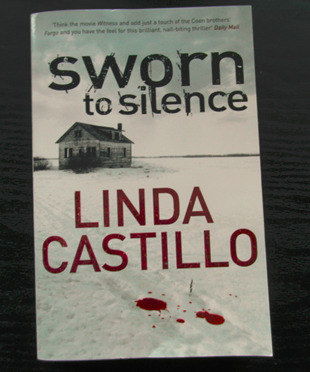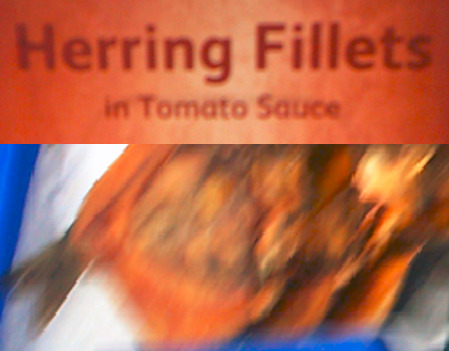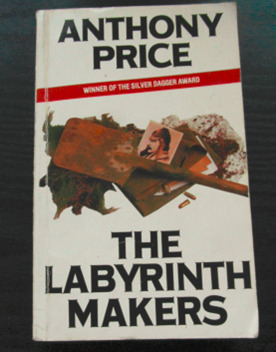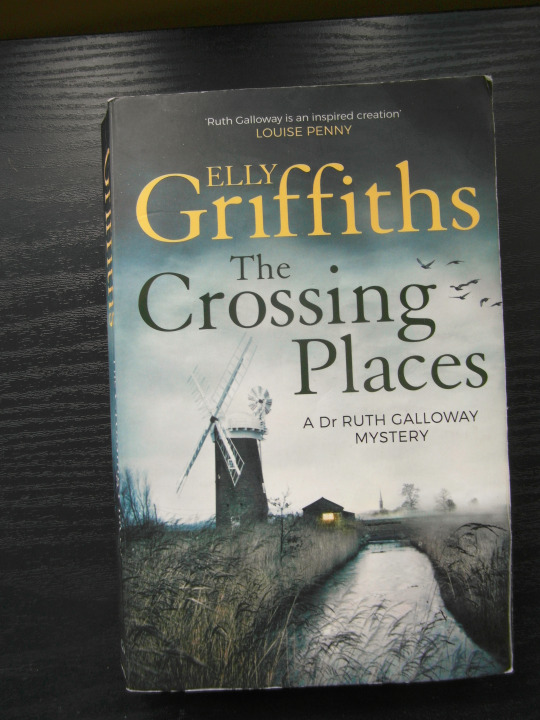Reviewing authors first books of a series - and recommending the best
Don't wanna be here? Send us removal request.
Text
Technical Edge – The deadly location: Grain Silos
You have your plot with a wicked murderer and/or an inconvenient body and you need a suitable location – you consider the grain silo…..
Linda Castillo uses one for one of her many corpses and several times as a venue.
What is a silo versus a store?
I am not a farmer so had a chat with one about his silos. Firstly he asked whether I meant grain silo or store:
· Silo – usually tall cylindrical metal structures for animal feed or silage
· Store – squat, tent like roof which do store grain but more likely for human consumption
It got a lot more technical so simply store your bodies there in your books and avoid too much detail!
They have innate health and safety risks – you can get trapped inside in the grain and there are occasionally noxious fumes – keep away.
Silos in fiction
One big adcnatge of the silo is that it is frequently on remote parts of the farm, used infrequently and really photogenic. Hannibal Lecter puts a body in one and indeed met with another serial killer (James Gray aka “The Muralist”) who used one for many more.
Books use them as venues such as the somewhat obvious “Body in the Silo” by Ronald Knox (circa 1933) and “The Silo” by Hugh Watson (yet to find copies).
However most famously in film is Witness (1985) where Harrison Ford assists an Amish community where one of their young boys witnessed a murder and becomes a target. The final action scenes occur on an Amish farm where the baddies (3) are up against the hero (Ford). Ford traps one baddie (Fergie) in a grain silo and lets loads more grain down on top of him….. In reality the same actor was used to highlight the dangers of silos.
As a location silos have a lot going for them. Consider the question though – what body part did Hannibal eat from the Muralist episode…… bon appetite.
0 notes
Text
Linda Castillo – Sworn to Silence

Castillo has come up with some fairly unique plotlines to produce her Kate Burkholder series:
· The setting is USA around the Amish religious community
· Kate Burkholder is a female Chief of police – which is fairly rare
· Kate used to be part of the Amish community – even more rare
These are police procedurals where a murder(s) occurs and the team get to work. There is a healthy dose of conspiracy and infighting occasionally with police and between the diverse religious groups.
Indeed you learn a great deal more about the Amish and other communities – that there are more and they all differ in various ways.
Health warning
Chapter 1 starts with a murder – and you get a great deal of detail with its occurrence. This is not horror per se but be aware Castillo is graphic throughout her Burkholder series.
Why do we read such material – like any thriller we can experience the horror at a safe distance and we know the case gets solved at some point – which reduces the threat. We like being shocked……
We also get to know a lot about Kate’s background and of her team – again somewhat graphic.
Back to the book
Castillo likes cliff-hangers and “will they rescue the person in time” tension. Given the twists and turns in the plots you are never quite sure how it all is going to be resolved.
She manages to produce shocking reality in her descriptions and is a good example of the police procedural genre.
0 notes
Text
Technical Edge – Red Herrings
Deliberate distractions in the plot which may be false, or maybe they are not as they could be a doble bluff… but maybe again….
(Elly Griffiths and almost everyone else 😊)

In the course of the plot the reader has to sort out which red herrings are false and which are actually part of the wider truth.
Where did the term come from?
Herrings are fish – actually a whole family of various species of fish. Their colour is the usually silvery tone and not red at all. However for centuries people have prepared them for storage by smoking which gives their internal area a red hue and, depending on the fuel used, red outside as well. They are very tasty and do smell…..
The smell is the key
That smell is allegedly where the idea of herrings being used as “a distraction” comes into play.
Work done by many suggest the idea originated in print from an 1807 story from English thinker William Cobbett. His is supposed to have suggested that trailing smoked herrings along the ground was used to confuse hunting dogs after rabbits
Before we think Cobbett the original hunt saboteur many have suggested that there was a misunderstanding. The technique was used to train horses/dogs to ignore strong smells and to keep going after the appointed prey. Herrings were being used to train animals not to be distracted.
Does it work?
Many have tried using herrings for various purposes and it seems to have issues.
The TV series MythBusters (number 148) tested the concept on a dog. The test involved tracking a fugitive whereby part way through the escape route a herring had been trailed as a distortion.
Result – the dog indeed came across the herring smell. Tracked it and ate the herring – then proceeded to go after and find eth fugitive.
Overall conclusion by the MythBusters team - “Busted” – red herrings in the real world don’t work.
0 notes
Text
Technical Edge - The Cold War
When it started, what it is and when it ended…. Or did it?
(Think Anthony Price’s world and many others in the espionage/conspiracy side)

We start right back after the Second World War. 1945 ended up with “Western” and Eastern” forces facing each other – literally tanks pointing their guns with just yards between.Vying for power the two side started tactics just short of outright war (i.e. a “hot” war) with roughly Europe and the USA on one side and Russia with satellite countries on the other plus China watching on.. generally.
What happened?
- There were no actual battles in Europe
- Many countries outside the two sides joined in – and they did have confrontations with military involved
- Major spy missions from all sides although you could argue “business as usual”
The actual term was thought up by a speech writer, Herbert Swope, for a politician (Bernard Baruch 16 April 1947) in the USA:
“Let us not be deceived we are today in the midst of a Cold War”
Both sides produced a military organisation:
West: NATO (North Atlantic Treaty Organisation) in 1949
East: Warsaw Pact 1955
Nuclear war
There were many political and actual confrontations – but behind it all was the possibility of a nuclear war. This was the biggest fear of all parties – that a smaller confrontation would escalate.
How did it end?
The Cold War kind of reduced in terms of tension gradually:
- Soviet (Russian) leader Mikael Gorbachev in 1985 put in place a new policy of “glasnost” or “openness” to offer information and contact with the West
- Gorbachev in 1987 added “perestroika” or “reform” of Communist Party ideals – including opposition to the West reducing
So mainly the East dropping some of the confrontational approaches – to the surprise of the West. Not everyone in Russia agreed and in 1991 there was a failed military coup which radically reduced Gorbachev credibility. He was replaced by Boris Yeltsin a much more West-friendly person.
So we are all friends now?
The best on intentions – began to droop as Yeltsin was plagued with internal opposition, complaints of mismanagement and corruption. The old Russian satellite countries gradually formed their own governments – not without warfare such as in Yugoslavia.
In 2004 Yeltsin was replaced by Vladimir Putin who by 2004 replaced electoral approaches to direct appointment of regional Governors. And gradually Russia moved away from dispersion of power back to centrally planned and controlled.
Relations with the West gradually declined – and the advent of overt cyber-warfare increased. The invasion of Ukraine in 2022 rather cemented the new relationship with the East:West back to where we all started……
0 notes
Text
Anthony Price – The Labyrinth Makers
Price had this book published in 1971, right in the middle of the Cold War. There are 19 books in the series – the main protagonists being the Russian intelligence (espionage) agencies.
The Cold War (well first one) ended in the 1990’s but with renewed conflicts in 2022 these books are as current as ever.

What’s it all about?
The books focus on generally a death (or many more) so certainly are whodunnits with a focus on national security, spying and a healthy dose of conspiracy.
They are not James Bond style – gadgets and exotic locations – unless you count Farnborough or Hadrian’s Wall as “exotic”.
The Labyrinth Makers is set in Southern England and the book blurb tells us it starts with a World War 2 Dakota aeroplane which turns up in 1971 at the bottom of a lake. It apparently crash-landed with the pilot – who is still on board … very dead. The Dakota was used by the British for cargo and that is the main plot line – the cargo was precious but was not in the wrecked plane. And does everyone one want that cargo – in particular Russian intelligence agents.
The main character in the first book is form a fictious research department in British intelligence – who works with a group of others. Interestingly each book in the series takes one of the characters from the group as the “main” – its not all the first one.
And the romance…
There is kind of a romantic storyline in the first book which adds to the plot and is a little left of field. Romance pops up on some of the other books but not as much as the first. Additionally in each you get a dose of facts around the age in question from World war 2, via the Romans and back to the present day.
A really good lot of spies
The book has spies abounding, a few deaths and many, many twist and turns plus conspiracy throughout. You are never quite sure until the end exactly who is doing what, their motivation and how it will all be resolved.
The plots are well crafted with tension, politics and all sorts of plots. Anthony Price died in 2019 aged 90 unfortunately – so no more books although some have been adapted for TV and radio. He did write one factual book on frigates – not read that.
Price might have been intrigued by present-day machinations of Britain’s opponents and friends alike – but enjoy his take on all that is a spy.
0 notes
Text
Elly Griffiths – The Crossing Places
This author does make things rather complicated – she has no fewer than 4 separate book series plus some stand-alone books.
The series recommended is the “Ruth Galloway” comprising of 15+ books.

Do archaeologists go around killing people?
No (or maybe they do…) – the main character Ruth Galloway happens to be a forensic archaeologist which is a bit of a departure form your usual thriller pole person of police, private investigator, ex-special forces etc.
The setting generally is Norfolk – mainly around the North coast. Crossing Places introduces our archaeologist Ruth and by yeh end of Chapter 1 we also get Detective Chief Inspector harry nelson “who wants to talk to you [Ruth] about a murder” and off we go. Add in a few of Ruth’s colleagues, family and friends and we have a group for the series.
We get:
- Murders in each book to be solved and in the first book maybe more than one….
- The author Elly Griffiths loves red herrings to confound and intrigue the reader
- You get a good level of detail about Norfolk – tends to be a bit bleak, raining, muddy and of interest only to sheep – do not be put off as I find it a very nice place!
- A bit of technical knowledge on archaeology – but that is not surprise as Elly and her husband both are in that trade
A prologue in the first books seems a bit extraneous – but goes quickly so you get into the plot quickly thereafter.
We have bodies who may or may not be ancient, suspects from archaeologists to druids and more, then plenty of rain….
So why does it all work so well?
Griffiths is a superb writer in that she develops interesting characters who you do care about. Varied methods of murder or ways of passing to be investigated abound. Tension – this is where Griffiths manages to tighten her grip and keep you guessing as to what might occur, who may be saved – and sometimes surprising you with who does not make it to the end of the book.
Do archaeologists make good murders?
Not many in fiction make it through – they are more likely to be the heroes rather than villains – think Amelia Peabody Henderson, Lara Croft or Nico Robin.
However they do pop up – Agatha Christie produces a couple (her second husband was an archaeologist…), raiders of the Lost Ark kind of had some and Midsommer Murders had one in the episode Saints and Sinners.
Recommendation
Enjoy the series – hard to say more about Crossing Places without revealing too much of the plot.
And if I did reveal the plot I might end up in one of Elly Griffiths deserted Norfolk marshes…. 😊
9 notes
·
View notes
Text
Welcome to First thrillers
This Blog recommends a fiction series of books comprising of at least 2 and in some cases in excess of 55. I have read all books in the series … as far as I can tell!
Some of the authors may be very well known but others more niche.
General warning – inevitably when looking at thrillers the Blog may cover areas such as murders, sex and violence – so caution is advised.
Why review the first book of a series?
Well it has to be very different from the rest of the series:
- There is a lot of scene-setting, introducing characters and plotlines. The latter books do not need that level or type of detail
- The author has the initial plot ideas which set the flavour for the rest
That first book may not always be the best and others in the series may be better known. But if you hit the first book - how well does it set the scene?
All of these are recommended for you to try!
1 note
·
View note